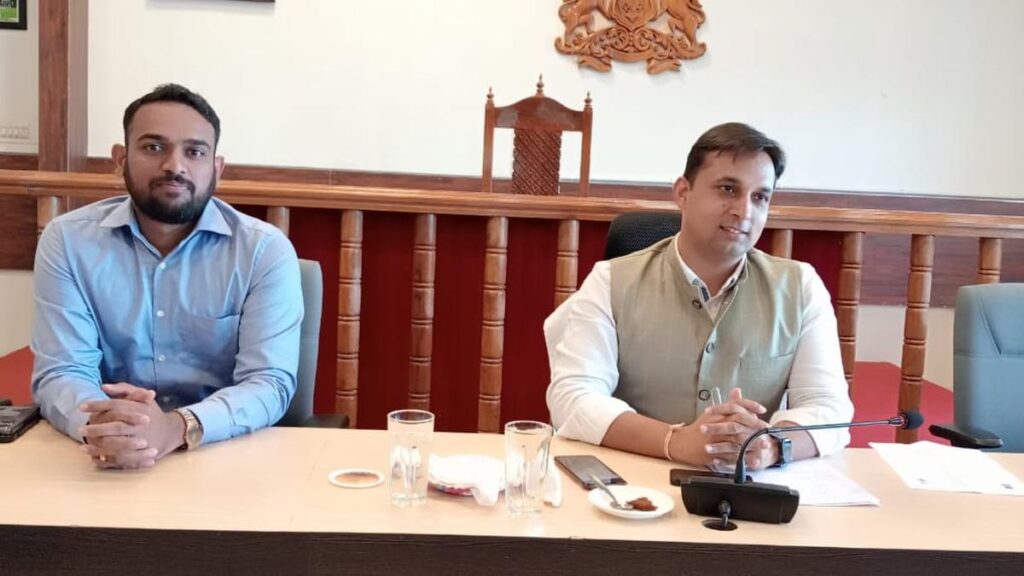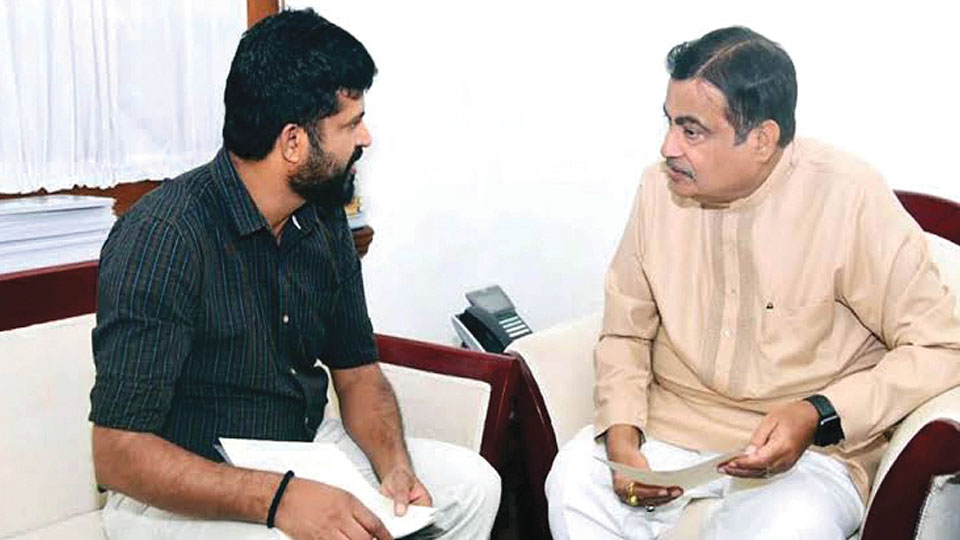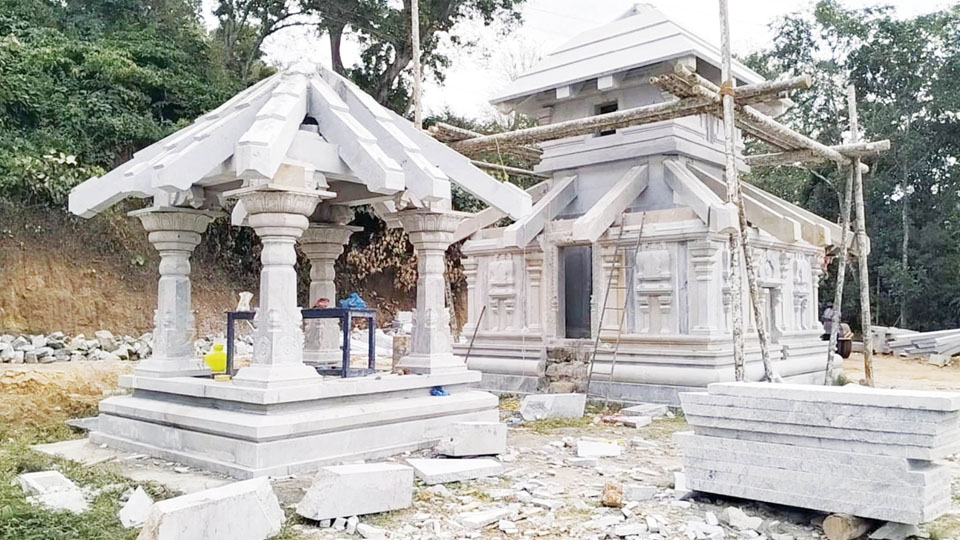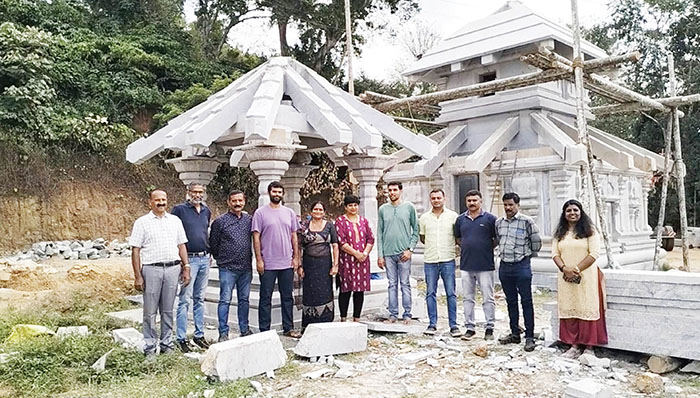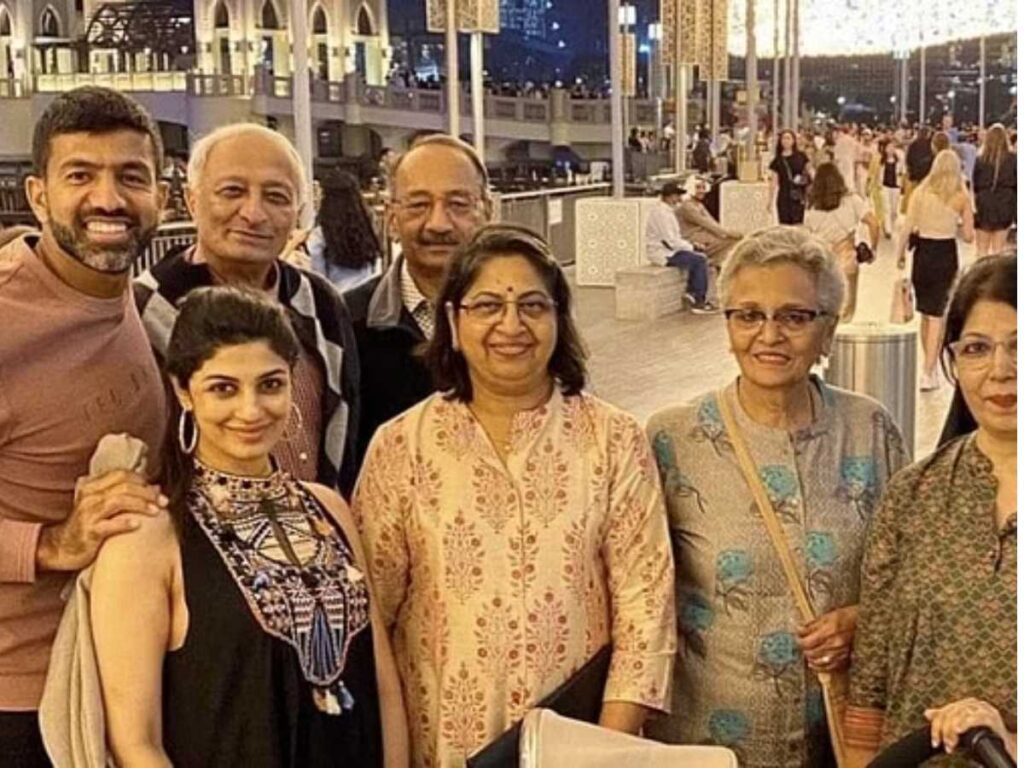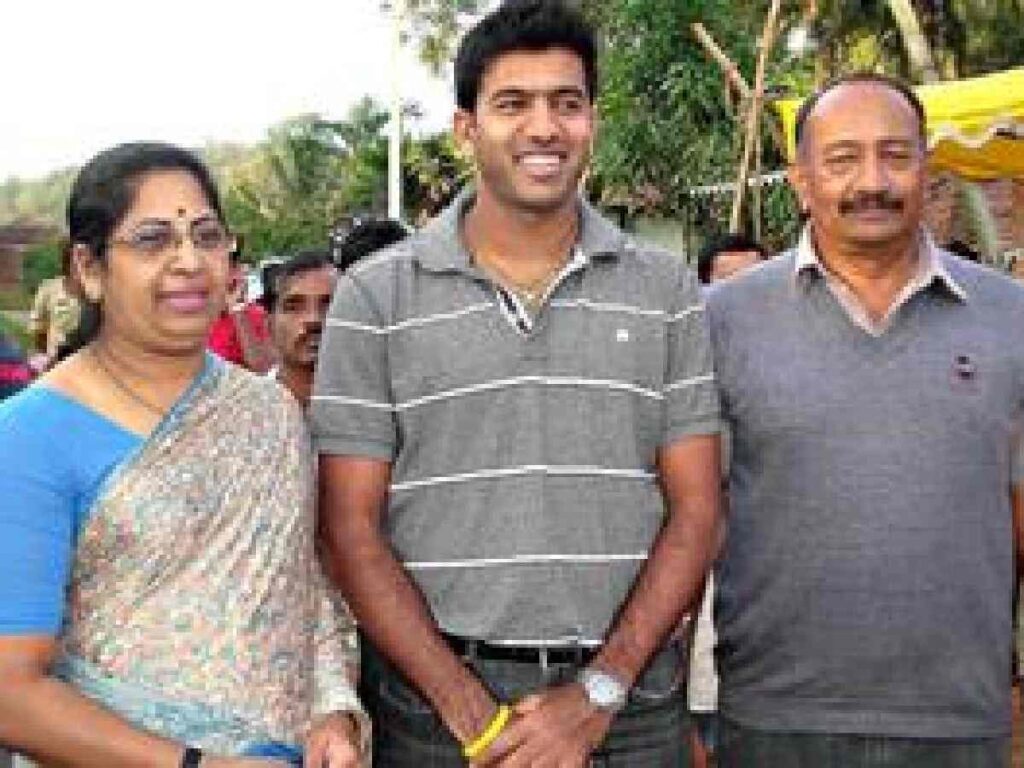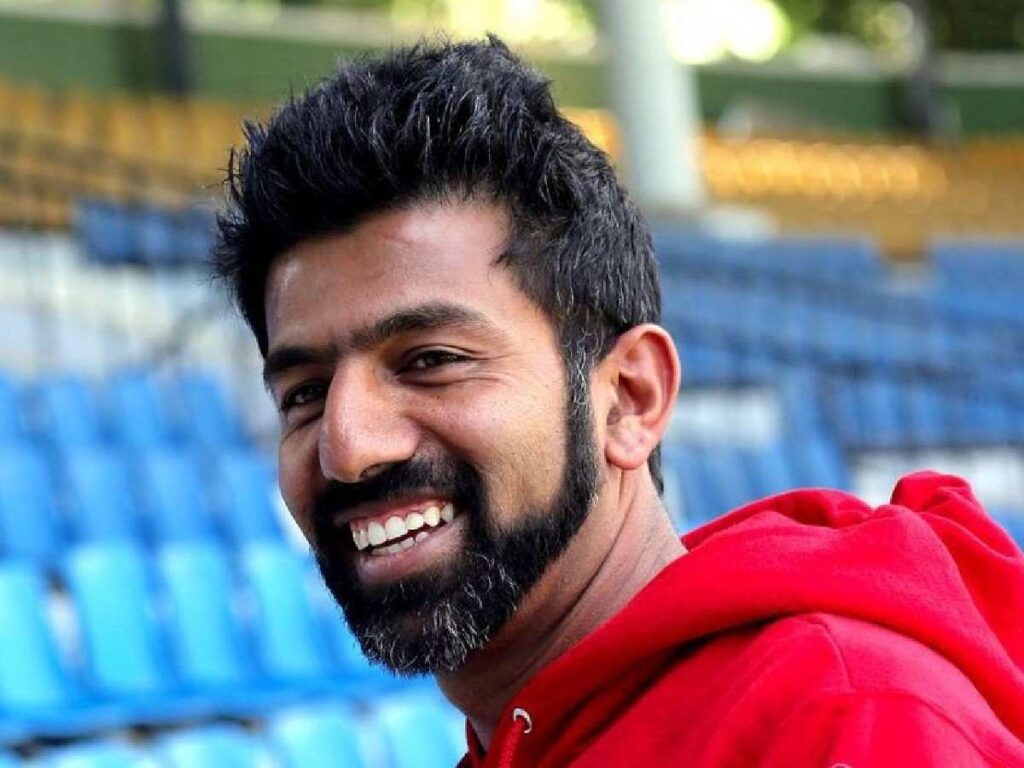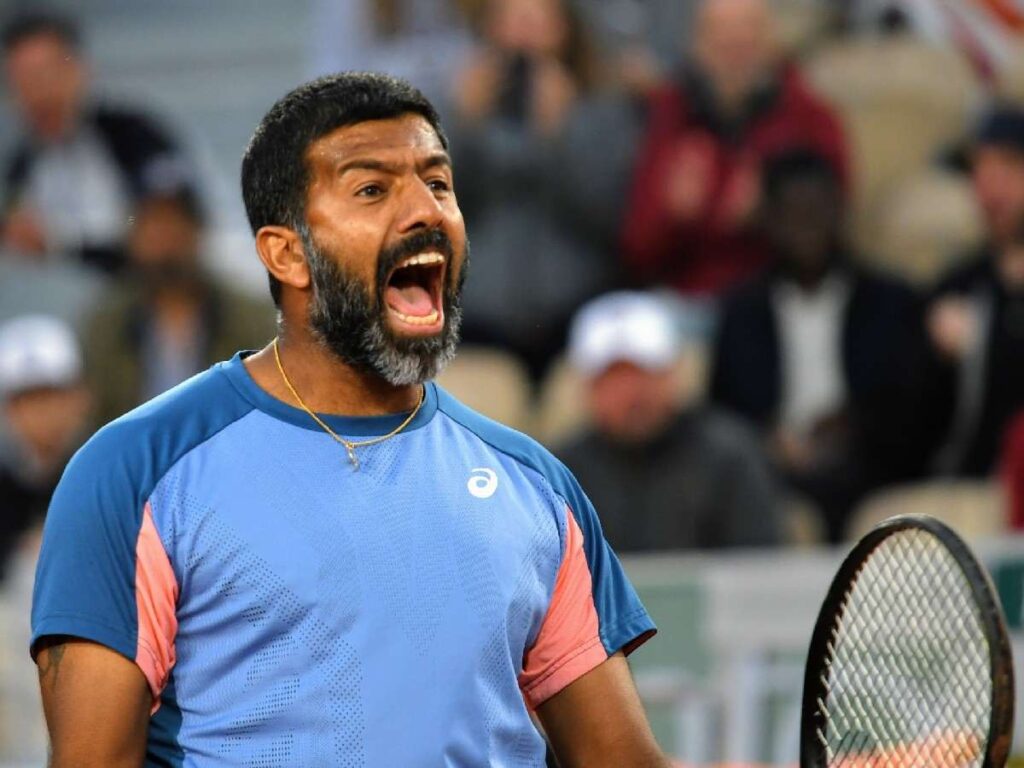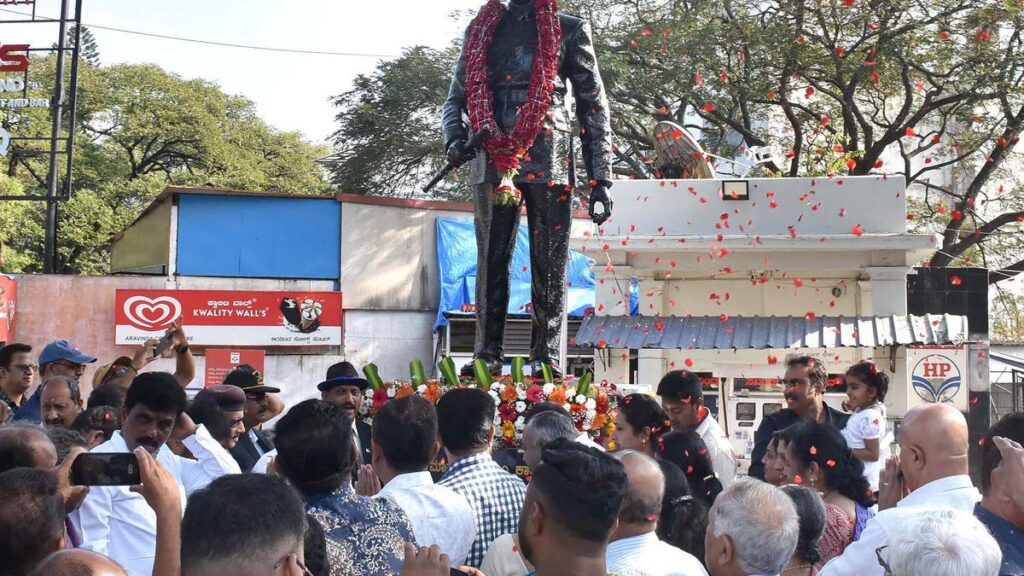
I have been to many places in all continents except Antarctica and South America, but I think the most beautiful place in the world is Kodagu (also known as Coorg).
Maybe it is because my ancestors came from here and as they say:
There is no place like home.
In the old days of my grandfathers time (before Independence), everybody made a living growing organic rice and organic oranges.
In fact they never even called it organic farming, they just called it farming.
It was the only method of farming they knew and it was handed over to them by their ancestors who followed it for millennia before the introduction of the “wonder” of the FUKUS inspired “Green Revolution“.
People also had cows and sheep and goats.
Coffee was still an unknown and little explored crop.
Only the wretched FUKUS colonists were practicing large coffee and tea plantations.
The common people of Kodagu had no knowledge or interest in coffee plantations, and were more concerned with organic paddy and organic oranges which they simply called paddy and oranges.
In fact my grandfather paid Rs 5000 in the 1930s to buy paddy fields that could have fetched him a 500 acre coffee estate today.
Kodagu paddy was world class and gave rise to many local rice mills which flourished and exported rice all over South India especially to Kerala.
Kodagu oranges were famous all over India.
The independence, grace, beauty and vivaciousness of Kodava women is also well known and remains true even to this day.
Kodava soldiers were famous all across India and this remains true even today.
The first Bharatiya general of the newly independent Army of Bharat was a Kodava General KM Kariappa.
Many Kodava boys dont join the Army anymore.
Most of them aspire to be work as software engineers for IT/BT coolies and then go to America on H1B visa and then work their way to a green card and enjoy the American “dream” which actually still remains a dream even in America and does not ever come to reality.
The British introduced coffee and pepper to Kodagu.
To establish these plantations, they destroyed multiples of a hundreds of thousands acres of pristine forests.
The Kodagu of the old days was not such an idyllic place though it was a place of great natural beauty and still remains so.
There were Nayakas first ruling Kodagu.
These were tribal chieftains who were Kodavas.
There were frequent wars between the Nayakas.
In fact many old settlements in Kodagu were fortified and had moats or huge earthen walls.
There were no banks in those days and people buried their wealth in their farms or their Nayakas farm to protect from grabbing by the other Nayakas.
There is a lot of hidden treasure in Kodagu.
One fault of the not just the Kodavas, but all people of Bharat is that they can never accept one from their own community as their leader.
So the Kodavas were gradually conned into accepting Haleri Rajas as their king.
Just like the rest of Bharat were gradually conned into accepting the British as their rulers.
Some of the Haleri Rajas were good but the last batch of them were dumbass tyrants.
They had many spies and were whimsical and killed people at their whims and fancies.
If they found a Kodava leader against them or even had the slightest unfounded suspicion, they would behead him in public and string up his body, kill all the male members, burn his house, confiscate his lands, and capture his women and then make these women marry the Poleyas, the traditional lower caste servants in Kodagu.
Tipu Sultan also invaded Kodagu and was repulsed by divine intervention by honeybees that chased him out of a Shiva temple (Male Sartav) he planned to attack.
So he conned 60000 Kodavas to come unarmed to a peace meeting at Devati Parambu, and then poisoned their food and captured and converted many of those left.
Thanks to Tipu, Devati Parambu became the Auschwitz of the Kodavas.
Never mind the genocide at Devati Parambu, a “freedom fighter” deserves a state holiday even in the region he committed genocide in.
People think Tipu Sultan fought against the British for the freedom of Bharat.
This is a fallacy.
He was not fighting for the freedom of Bharat, but just for his kingdom.
Like most Bharatiya kings fighting each other, Tipu Sultan fought against many Bharatiya kings too.
And he took the help of French colonists to do this.
In fact there was no such thing as Bharat after the fall of the Ashokan empire, which also owes its illustrious origins to the wisdom and inspiration of Kautilya.
Bharat was just a bunch of kingdoms fighting each other, mainly for greed of land, wealth and power.
Fighting over religion was not the main reason.
It was an added bonus, but it would never have occurred if the kings were not first interested in greed for land, wealth and power.
Coming back to Tipu Sultan, in addition to Kodavas , he also fought against Marathas, Mallus and Mangaloreans.
He forcibly converted his war captives to Islam and committed many war crimes and genocide against his captives and his defeated enemies.
After Tipu Sultan was defeated, back came the Haleri Rajas and they got crazier and more tyrannical by the day.
So the British decided to invade Kodagu and kick out the Raja.
Both my Mom’s and Dad’s families fought on the side of the Raja.
The British bribed the Rajas generals, Apparanda Bopu Diwan and Cheppudira Ponnappa Diwan to switch sides and this helped the British win the war.
Masti Venkatesha Iyengar has written an excellent book called Chikaveera Rajendra covering this critical period in Kodagu history.
The book is available only in Kannada since the English version is now out of print.
G Richter has also written an excellent book on Kodagu :
Manual of Coorg: A Gazetteer of the Natural Features of the Country, and the Social and Political conditions of its inhabitants.
As it happens in any war, the winners take all especially from the losers.
So the families that sided the British did well and those that opposed the British had their lands take from them and distributed to the British supporters.
The saying is that those that sided with the British got Umbli(Jagir lands), and those against the British got Kambli (blankets to cover them when they cut the lantana bushes).
There were also many Kodavas who became wannabe British Coconuts, and some of them even converted to Christianity and many of them adopted British names.
Guddera Appaya was from our village and a neighbour of my Dad’s family.
He led the first war of rebellion against the British.
Kodavas and Gowdas are the traditional land owning families in Kodagu.
These Gowdas are not Fumble Harmer type rude and crude Gowdas, but more cultured Gowdas from South Kanara.
Actually even the Gowdas were later imports.
Kodavas were so busy fighting and killing each other, that their lands became neglected and so they invited Gowdas from Sulya to help them maintain their lands.
The genocide done by Tipu Sultan also contributed to the reduction of the Kodava population, which also led to more Gowdas being invited to Kodagu.
In fact Kodagu was bigger than it was today.
It extended to Sulya and Periyapatna.
Kodavas and Gowdas got along much better in the old days.
Today there are sectarian forces trying to divide the Kodavas and Gowdas.
The land holding system of Kodagu is unique and must be followed all across Bharat.
Here, family property(Jamma land) cannot be sold without the consent of the other members of the family.
Only self earned or Sagu property can be sold without the consent of the family.
All members of the family have a right to Jamma Land.
Kodavas still remain a tribal and agricultural people with regard to our festivals and naad nammes(village festivals).
Animal sacrifice is still practiced in many naad nammes.
I went to the Tere festival on the second day of our Naad namme when I was a small child (I was about 7 or 8 years old) and have never gone to the second day Tere festival since.
The possessed person who is talking to God, drinks bottles of neat raw alcohol, walks barefoot on hot coals, cuts off the heads of live chickens and pigs and drinks their raw blood
It is a most interesting sight to see if you have a strong stomach.
Kodavas are born and raised with guns and swords and we worship our guns and our traditional swords.
There are many mysteries of the origins of the Kodavas.
But some knowledgeable people like Lt Col KC Ponnappa say that we have Kurdish origins and that we are part of Alexanders army from the Kurdish areas that he had conquered before coming to Bharat.
Lt Col KC Ponnappa wrote an excellent book A Study of the Origin of Coorgs which is now out of print.
An even more interesting theory has been put by Mookanda Kushalappa that we that we have links with the Yazidis.
That means like the Yazidis, Kodavas may also have originated from Mittani.
But I have talked to Kodavas who have been to Kurdistan, and they say there is no doubt that Kodavas have come from the area of Kurdistan in the manner of our looks, dress, some cultural terms matching the local Kurds.
Obviously religions practices and customs have changed significantly, since the whole Middle East is now a Muslim area, whereas Kodavas predated the Islamic Era.
One of the few still existing pre-Islamic tribes still in Kurdistan are the Yazidis.
And from what little I know of the Yazidis, they also worship Subramanya like the Kodavas.
Like the Kodavas, the Yazidis also worship 6 male Gods of Nature and one female Goddess of Nature as their main Gods.
I am not sure if the Yazidis are also ancestor worshipers like the Kodavas.
Of course, since the Yazidis happened to have the misfortune of retaining their culture in an otherwise Islamic region, that too with the most puritan and hardcore form of Islam, they are considered as “devil” worshipers.
Horrible crimes against women and genocide against women was committed against the Yazidis, by the real devils – ISIS – that most memorable bunch of cowardly mask wearing semi-literate, perverted, sadistic, sex starved thugs, with a fondness for Toyota trucks, guns, sex slaves, young boys, young girls and sheep.
I would not be surprised if the Kodavas traced their roots, it had some link back to the Yazidis.
I have seen many common things between the people of the Middle East and the Kodavas.
Both have treasure boxes called Sanduka, both men wear vastras (bandanas), both carry daggers and both have a fondness for hunting.
Maj Gen Codanda K Karumbaya, SM (Retd) has written a very interesting article about Kodagu – Kodavas through the Ages.
There is a very long but nice video about the Kodavas.
Youtube
Now Kodagu is changing for the worse.
Today most farmers in Kodagu gain most of their income from coffee and pepper.
The old ways of organic oranges and organic paddy is lost.
This has serious implications for Kodagu farmers who have only concentrated on growing coffee and pepper, a lot of which is exported.
Coffee and pepper are now globally traded and their price is fixed by the global market and we have to compete with other global suppliers.
If there is a fall in commodity prices because of the currently failing global economy, a lot of farmers in Kodagu will be in trouble.
This had happened earlier in the mid 1990s.
The price of coffee fell and people sold their estates and found jobs in Bangalore.
In fact my cousin told me it was so bad that even the banks stopped repossessing the cars of car loan defaulters in Kodagu because the banks had no place to park so many repossessed cars.
In the 1940s, paddy was sold for Rs 3 a batti (65 kgs)and 10 grams of gold was Rs 45.
So basically in the 1940s, 975 kg of paddy bought you 10 grams of gold.
Today 975 kg of paddy (9.75 quintals) will sell for Rs 14600 or 4.85 grams of Gold (@Rs 30000/10gm of gold and Rs 1500/quintal of paddy as of 5/5/2017).
As you can see it is not profitable to grow rice anymore and that is why the Kodagu farmers have shifted to coffee and pepper.
Farmers all over the watershed areas of the Western ghats (Kodagu, Malenad) the sources of two major rivers the Kaveri and the Thunga are abandoning the cultivation of rice and letting their fields fallow or if they are near tourist spots and towns, they are converting their paddy fields to resorts and sites.
If you ask any specialist in rain water harvesting and ground water recharging, rain fed and river overflow flooding based organic paddy cultivation is very nature friendly and helps a great deal in maintaining the water table not only in the surrounding areas, but more importantly in the rivers.
It also is a source of support for wonderful fauna like koile meen (a small tasty fish), crabs, frogs and other things.
This also provided the base for a wonderful feast of traditional Kodava food.
It also minimizes serious flooding and controls flash floods.
This abandonment of traditional rain fed paddy harvesting has dangerous implications for the Kaveri and Thunga rivers and will finally affect the Mandya farmers and IT/BT Coolies and Builder/Real Estate Mafia in the Silly Con City.
IT/BT/SEZ coolies and Real Estate Mafia in the Silly Con city, playing in their infinity swimming pools and golf courses which have sucked out all the groundwater in the Silly Con city, will not understand the importance of Kodagu.


The Kaveri River, the holiest and most life sustaining river, the Ganga of the South, originates in Kodagu.
If Kodagu is infiltrated by the black money builder and real estate and resort mafia as it is rapidly happening now, the Kaveri river will cease to exist in 10 years.
I have personally seen the effects of this decline of the Kaveri in Coorg.
In my dads days he said that even in the peak of summer if you wanted to cross the river at my place, it came up to his chest.
Now even my 6 year old nephew can wade across the Kaveri river at my village.
Can you imagine what would happen to not just the Silly Con City , but entire South India if the Kaveri River ceases to exist?
With increasing interest as a tourist destination, a lot of outsiders with black money from the Silly Con city, Tamil Nadu, Andhra and other areas are investing in Kodagu.
These outsiders have no respect for the traditional culture, heritage and environment of Kodagu.
They are only interested in financial return and speculation.
They want to make money in the fastest way possible even if it means destroying a pristine environment that had lasted for millenniums and which is the main source of the Kaveri River.
They are converting paddy fields into resorts and sites, and building villas in coffee estates by cutting down the priceless natural forests.
This has raised the land prices in Kodagu and encouraging locals also to cut their trees and convert their lands to layouts and resorts.
Deverakadus (Gods forests and sacred groves) are being encroached upon.
This is mainly because of selfish Representative DFI’s who are more interested in vote gathering than saving Deverakadus.
They promise free houses to ever willing so called “deprived” classes and even outsiders and even illegal immigrants from Bangladesh, and destroy Deverakadus to build these houses.
Kodagu used to be a separate state.
If the Kaveri River is to remain as the river as it was known and still have some hope of continuing to provide sustenance to the whole of South India, Kodagu must become a separate state again with strict land laws like Himachal Pradesh.
Currently only the Kodavas are agitating against a separate state and they have a very parochial agenda of only the Kodava people.
There are many other traditional communities living in Kodagu.
If Kodagu is to become a separate state all the traditional communities living in Kodagu, not just the Kodavas and Gowdas, but even the Poleyas and Kurubas should have a say in the running of Kodagu.
In fact, in the entire Western Ghats, the Gadgil Committee report must be implemented.
I have read the Gadgil Committe report.
However there are some flaws in the Gadgil Committee report, not in the main list of activities but in the regulated list.
Looking at this report, I think like all Committee reports, especially those devised by University professors, the Gadgil committee report also gave more weight to University Professors academic recommendations instead of including the ground realities faced by the local people on the ground.
If the report really has to be implemented, it must first take into account the ground realities faced by farmers on the ground.
Most farmers do not have an opposition to the banning of the main list of activities.
However a lot of them have opposition to the list of regulated activities.
Even minor current day farming practices like building farm roads and digging ponds and drawing electric wires through their farms come under the cover of regulated activities.
It is very easy to say regulated activities, but considering the corruption in Bharat, any regulation is just a means for officials to take bribes and a drain on residents who are forced to give bribes to break the regulations.
However if the above flaws are corrected, the Gadgil Report is most ideal because it primarily calls for local participation by ordinary informed, enlightened and selfless local people to implement this report.
It is the selfish vested interests of devious Dalal Street Pimp/Lala Businessmen and Representative DFIs, and ignorant self proclaimed middlemen of God, who incite the ignorant locals in these regions to protest against the Gadgil Report.

Here is article in the Hindu by Professor Gadgil himself slamming the ignorant Kasturirangan report.
Land should only be purchased among locals in Kodagu or those who have roots in Kodagu or have stayed twenty five years in Kodagu or those outsiders who will practice only traditional organic agriculture of Kodagu and provide permanent agricultural employment to 1 labourers/5 acres.
New land purchase must only be used for agricultural, plantation or forest conservation use.
No new land purchased any be converted from agricultural or plantation use to non agricultural use.
No further forest land should be converted to any other use.
All previously encroached forest lands must be taken back and converted back again into forests.
The forests should consist of actual forest trees which traditionally existed in the area, not teak and commercial plantations that our so called government “forest” “conservationists” and authorities consider as “forests”.
Forests are for the benefit of Nature, not for the benefit of man.
So the trees and vegetation that benefit Nature and animals only should be planted.
Instead of just planting Silver Oak, planters should be encourage to plant other forest trees on their land on the condition that they can cut it and sell it after 25 years.
Bamboo plantations must be planted along all river banks to discourage sand mining and also to encourage water recharging and river rejuvenation.
Further subsidies and incentives should be given to encourage local landholders to preserve their lands as forests and sanctuaries.
If one wishes to purchase land just for conservation of nature and environment and will not sell it for hundred years they also should be able to purchase land.
No ecotourism projects should be allowed for outsiders, non Kodagu residents, corporates and large outside investors in any form, even joint ventures and joint developments.
If it is found that a local is benami fronting for an outsider or those who do not have roots in Kodagu, then the property should be confiscated and an amount of 5 times the project and investment cost must be recovered from the outside investor and 2 times the land cost must be recovered from the local who benami fronted the project.
If they cannot pay the above amounts, then their other assets should be seized and auctioned to recover the amount due.
Minor ecotourism projects can be allowed for locals who have stayed there at least 20 years, but all these ecotourism projects must first get government approval and then approval from the local village panchayat and gram sabha.
Conversion of agricultural and plantation land and purchase of such land (greater than 0.5 acres) in Kodagu must be strictly regulated and discouraged and taxed heavily if it is converted to resorts and villas.
This is especially for areas more than 2 acres, and for areas that previously had at least 30% tree cover on them and were more than 1 km from any town limits.
Built up area of these resorts must not exceed 1% of the land area or a maximum of 1/2 acre for the entire plot.
This should especially apply to non locals who purchase this sort of land to convert it.
In any case, exempting current residential areas, not more than 0.05% of the area of the Kodagu district and entire Western Ghats and other environmentally sensitive areas, should be allowed to be further conversion for any purpose other than residential use.
Also the residential use will be on the condition that the property converted to residential use must be occupied as a primary residence within 5 years after date of conversion to residential use.
The residential Floor to Area (FAR) ratio should be a maximum of 1 subject to a maximum of 8000 sqft per acre with a maximum area of 1 acre per farm upto 100 acres and 3 acres per farm upto 500 acres and 4 acres per farm above 1000 acres.
This includes all labour quarters and farmhouse and other residential purposes.
In addition an area can be used for livestock of upto 10000 sft/acre upto a maximum of 1 acre per farm regardless of the size of the farm.
Paddy fields should not be left fallow.
Deverakadus must be strictly protected and rejuvenated.
Tourist resorts especially by outsiders (non Kodagu residents), should not be allowed.
Home stays can be allowed with a maximum of 8 rooms in a joint venture with local residents.
To subsidise and encourage existing local individual Kodagu land holders, especially small and medium land holders to follow the above suggestions, a National subsidy fund must be created by imposing a tax cess on the downstream beneficiaries of Kaveri River.
Even existing local corporate land holders should be given a 40% subsidy if they follow the above practices.
This tax cess will be imposed lightly on the middle class and above residents of the downstream cities, but more heavily on the Real Estate developers, other industries and IT/BT/SEZ/Industrial parks and other such major exploiters and beneficiaries of the Kaveri River, not just in the Silly Con City, but all along the watershed of the Kaveri River.
The above conditions of tax cess and subsidy should apply not just to Kodagu but to the entire Western Ghats and all ecologically and environmentally areas in Bharat, especially the catchment areas of major rivers.
Kodagus still remains one of the safest places in Bharat.
I have seen women walking alone in the dark on unlit roads even at 12 in the midnight.
But nowadays there are reports of single women and old people being attacked when they stay alone in their houses.
This could be because of the influx of outside labour from Bihar, Orissa, Assam, Bangladesh and other places.
I am very worried about the influx of labour from these places.
Most of Assam, Bangladesh, Jharkhand, Bihar and Orissa is very unsafe and some of the people there are of a very violent sort and have very misogynistic and unscrupulous attitudes compared to the traditional local residents of Kodagu.
In fact all over the South , the people are much more disciplined, polite and less misogynistic than the Northern states.
The danger to safety in Kodagu is also because of unchecked and unregulated tourism.
Whenever a place becomes a tourist attraction, there are two sorts of people who land up to see the place:
- Families who come to enjoy the place, but can only come on weekends and long holidays.
- Third class porkis (rogues or scoundrels), who are usually bachelors and men with bad marriages, not really interested in the beauty of the place.
They just want a quiet and cheap place not to far away from their hometown where they can remain unrecognised and indulge in the most fundamental of perversions that third class porkis are fond of – gambling, drinking and whore mongering.
Unfortunately Kodagu has become a cheap tourist attraction instead of a family destination.
This has also attracted a lot of third class porkis like I have described above and this is changing the previously safe environment of Kodagu.
The poleyas, yeravas and kurubas are the traditional labour of Coorg but they drink too much.
Many people in Kodagu, even rich and educated Kodavas drink too much.
Too much drinking is a curse not just in Kodagu, but entire Bharat.
There is a misconception that Kodavas are “Hindus“.
Kodavas are not “Hindus“.
Most Kodavas themselves have been ignorantly modifying our religion to become more Hindu.
The Kodavas of the old days and even now worship their ancestors and Nature and the mighty Gods of Nature.
The Kodavas and other tribals of Bharat are the true inheritors of the Rig Veda which also mainly worships the Gods of Nature and praises the wonder of Nature.
That is why I like my Kodava community way.
We worship Nature and our ancestors, we have no Gods, we have no priests, we have no Vedas and Shlokas.
Our ancestors and Nature are our Gods.
Worship of Nature, the most sublime gift of Brahman is true worship of God.
When we die, we are cremated and our ashes are spread across the farm or put into a river.
There are no public cemeteries. There are no public grave stones. There is nothing in public. Every memorial is by the families and on their private lands only.
There are only public cremation grounds that too restricted to the clan of the person.
We probably are the only community in Bharat to have Ainmanes.
The roots of Kodavas are very strong, the roots of most Bharatiyas are very strong though the new generation of Bharatiyas is trying hard to abandon their roots and follow the rootless Americans.
A person must have roots.
With roots comes a love for the land and its people, not the love for money.
A person with strong roots will never sacrifice his land and people for the sake of money.
A person with strong roots will realise that the best way to worship our ancestors is to leave to our children what our ancestors fought even with the cost of their lives for to give to us.
There is an old Native American saying:
We did not inherit this earth from our ancestors,
We have borrowed it from our children.
Note:
I am not a full blooded Kodava – my mom’s mom was a Keralite Christian Army Doctor – so that makes me 1/4 Mallu Kutti.
My Grandmom and Granddad met at Quetta, Balochistan, before Independence.
They were both serving at Quetta, in the only true bastion of secularism in Bharat, the Indian Army.
Most Keralites and Kodavas I know are very smart and down to earth people.
They are calm and humble, and even if they are well accomplished, they dont talk big about themselves.
This is very unlike almost all of our Representative DFI’s who rigorously follow the saying:
“Chaar Aane Ka Murgi, Bara Aane ka masala” (Four annas chicken, 12 annas masala)
source: http://www.aryadharma.world / Home> Articles / by Dhyan Appachu Bollachettira

